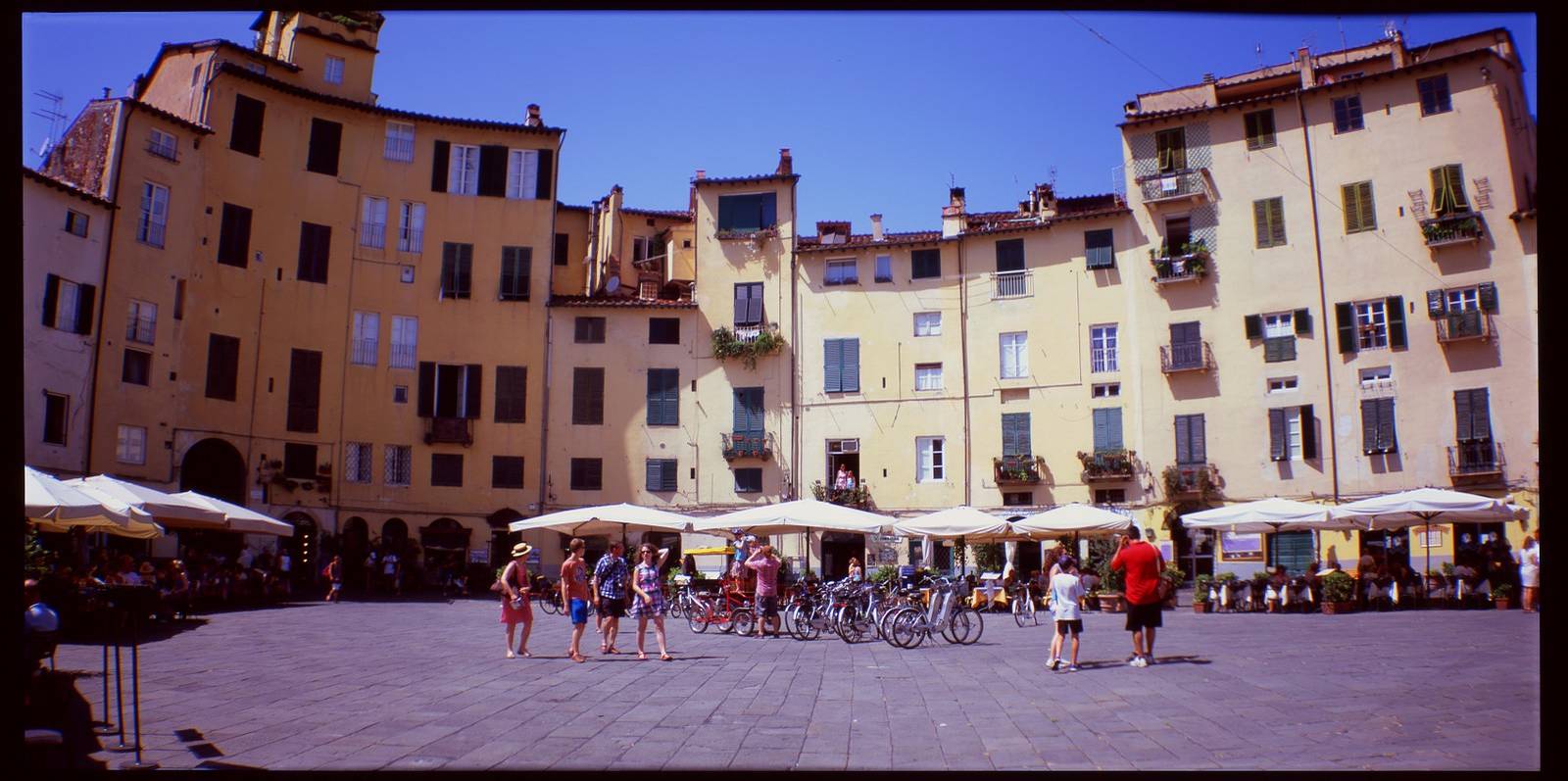The Belair X 6-12 City Slicker: a camera for surprises and serious shots
8 Share TweetWhen the Belair X 6-12 was introduced last year, I was pretty excited. A medium format camera with 6×12 size negatives and automatic exposure for a reasonable price, that sounds promising. More of my photos, experiences and tips after the jump.

I had gathered enough Piggy points to order the *Belair X 6-12 City Slicker* before our holiday to Italy last year, and managed to shoot and develop one test roll in black & white just before we left. To get 12 exposures on one roll of film, I started of in the classic medium format with the 6 × 6 mask. I used a 100 ISO film from Lomography and was pretty satisfied about the results: Fairly sharp and properly exposed photos.
However you need to be aware of the limitations of the Belair to get good results from the auto exposure. The maximum shutter speed is only 1/125 second, and as a rule of thumb your shutter speed should not be much lower than the focal length of your lens to get a sharp exposure. With the standard 58 and 90 mm lenses that come with the Belair, this gives you some limitations in your choice of film.
Following the Sunny 16 rule, using a 100 ISO film would give you a good exposure with aperture f16 in the sun: shutter speed = 1/ISO = approx 1/100 s, which falls nicely in between the limitations mentioned above. When it’s cloudy, you can use aperture f8 to have the Belair select about the same shutter speed.
When using ISO 400 film or higher, you run into the limitations of the shutter speed pretty quickly, resulting in overexposed photos. So I would recommend ISO 100 or 160 film for normal use (set the ISO dial to 200 for ISO 160 film or to 100 when it’s expired), and use ISO 400 or higher only in really dull weather or in the evening.
You also need to be aware that especially with aperture f8 the Depth of Field (DoF) is pretty limited, so you need to set the proper distance fairly precise. This is important when you are shooting portraits with the 90mm lens and want the best sharpness for your subject. But luckily the manual gives a diagram which clarifies this and gives you some guidance.
Keeping these tips in mind, you can shoot pretty nice photos with the Belair camera, especially the 6×12 format can give you stunning pictures. But how does it operate in real life? The folding mechanism is reasonably sturdy but you need to hold the camera properly with two hands to prevent camera shake. When you hold your left hand under the back, you can hold the front part and push the shutter with your right hand.
When the camera is folded it is pretty portable, but with the folding mechanism extended it becomes quite big. So I already scratched my wide angle lens a little when climbing a cramped city tower in Sienna. The lens caps are not really helping in this, as they tend to fall of the lens pretty easily.
You might want to keep your Belair in a camera bag, especially when you also want to bring the second lens and viewfinder. This allows you also to bring some extra film, as with 6 exposures in the 6 × 12 format your medium format rolls are full pretty quickly.
The viewfinders are suffering a little from the different angle related to the lens, so I ended up with quite a number of pictures where the top of church towers or other high subjects was not captured on the film, while I remembered to include them in the composition. So you might need to aim a little higher than you see in the viewfinder.
All of this makes the Belair not so much a snapshot camera like the *LC-A+*, but a camera which will be used more deliberately. This makes it also less of a real Lomo camera which you can point and click without thinking. But the photo quality also aims for the more serious medium format shooters, especially when combined with the glass *Belairgon lenses*.
I find the all black and plastic *City Slicker* a sufficiently robust and good looking (but not flashy) camera, also in combination with the 35mm back or the new Instant back. The other Belair editions have a partially metal casing, which might be more sturdy and might also draw more attention.
The 35 mm back, which I have reviewed separately is a nice and affordable addition to the Belair, espcially when bought as a bundle. It allows you to use cheaper 35 mm film and get pretty wide panoramas with sprockets.
Summarizing my experiences, the Belair is a nice camera that can give you great results, as long as you are aware of its limitations and know how to work with them. By introducing this medium format camera with the 6×12 format for a reasonable price, Lomography has made steps towards more serious analogue photographers, while the Belair still offers enough surprises (both positive and negative) for the Lomo users. As I feel part of both groups, I am pretty happy with this camera!
written by wesco on 2014-05-03 #gear #medium-format #120 #review #reala #italy #velvia #requested-post #belair-x-6-12





































No Comments